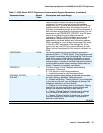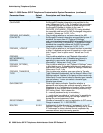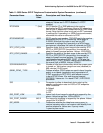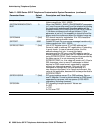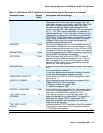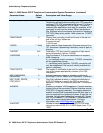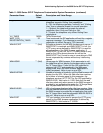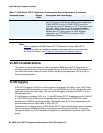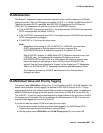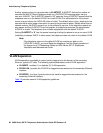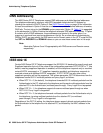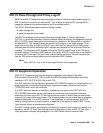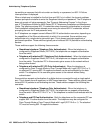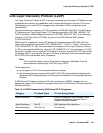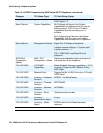
VLAN Considerations
Issue 2 December 2007 95
VLAN Detection
The Avaya IP Telephones support automatic detection of the condition where the L2QVLAN
setting is incorrect. When VLAN tagging is enabled (L2Q= 0 or 1) initially the 9600 Series SIP IP
Telephone transmits DHCP messages with IEEE 802.1Q tagging and the VLAN set to
L2QVLAN. The telephones will continue to do this for VLANTEST seconds.
● If the VLANTEST timer expires and L2Q=1, the telephone sets L2QVLAN=0 and transmits
DHCP messages with the default VLAN (0).
● If the VLANTEST timer expires and L2Q=0, the telephone sets L2QVLAN=0 and transmits
DHCP messages without tagging.
● If VLANTEST is 0, the timer will never expire.
Note:
Note: Regardless of the setting of L2Q, VLANTEST, or L2QVLAN, you must have
DHCP administered so that the telephone will get a response to a
DHCPDISCOVER when it makes that request on the default (0) VLAN.
After VLANTEST expires, if a 9600 Series SIP IP Telephone receives a non-zero
L2QVLAN value, the telephone will release the IP Address and send
DHCPDISCOVER on that VLAN. Any other release will require a manual reset
before the telephone will attempt to use a VLAN on which VLANTEST has
expired. See the Reset procedure in Chapter 3 of the Avaya one-X™ Deskphone
Edition for 9600 Series SIP IP Telephones Installation and Maintenance Guide.
The telephone ignores any VLAN ID administered on the Communication
Manager call server.
VLAN Default Value and Priority Tagging
The system value L2QVLAN is initially set to “0” and identifies the 802.1Q VLAN Identifier. This
default value indicates “priority tagging” as defined in IEEE 802.IQ Section 9.3.2.3. Priority
tagging specifies that your network closet Ethernet switch automatically insert the switch port
default VLAN without changing the user priority of the frame (cf. IEEE 802.1D and 802.1Q).
The VLAN ID = 0 (zero) is used to associate priority-tagged frames to the port/native VLAN of
the ingress port of the switch. But some switches do not understand a VLAN ID of zero and
require frames tagged with a non-zero VLAN ID.
If you do not want the default VLAN to be used for voice traffic:
● Ensure that the switch configuration lets frames tagged by the 9600 Series SIP IP
Telephone through without overwriting or removing them.
● Set the system value L2QVLAN to the VLAN ID appropriate for your voice LAN.



